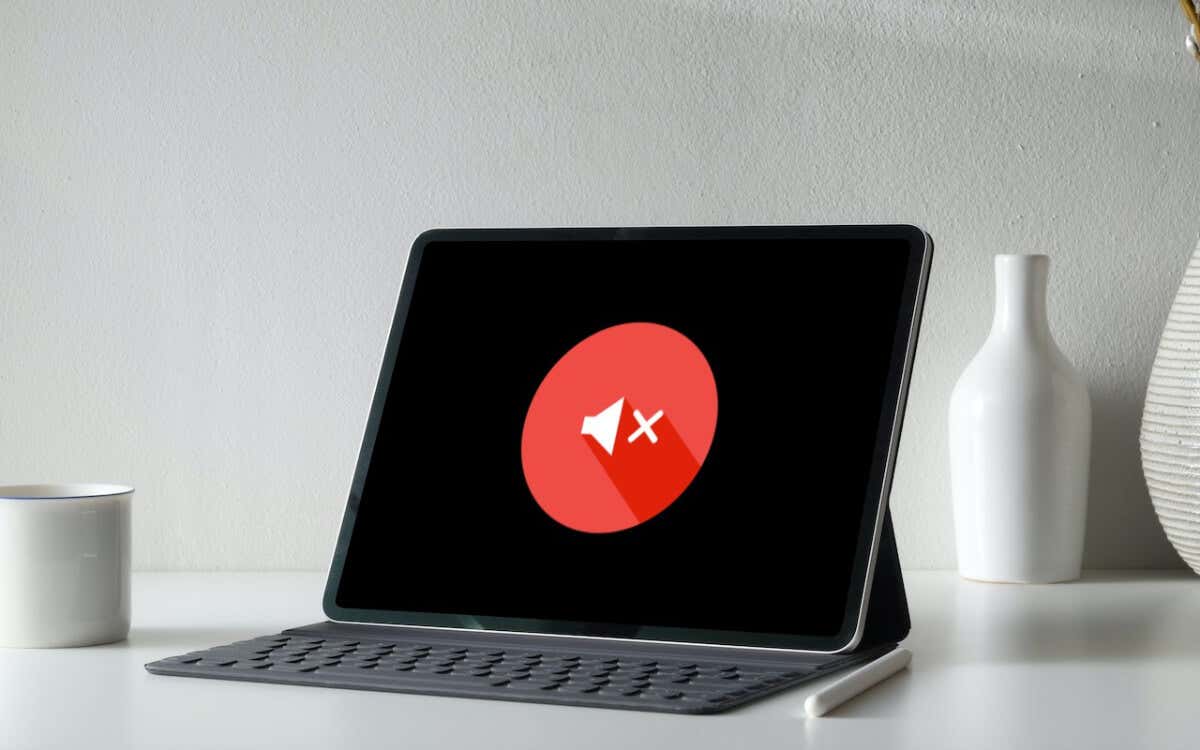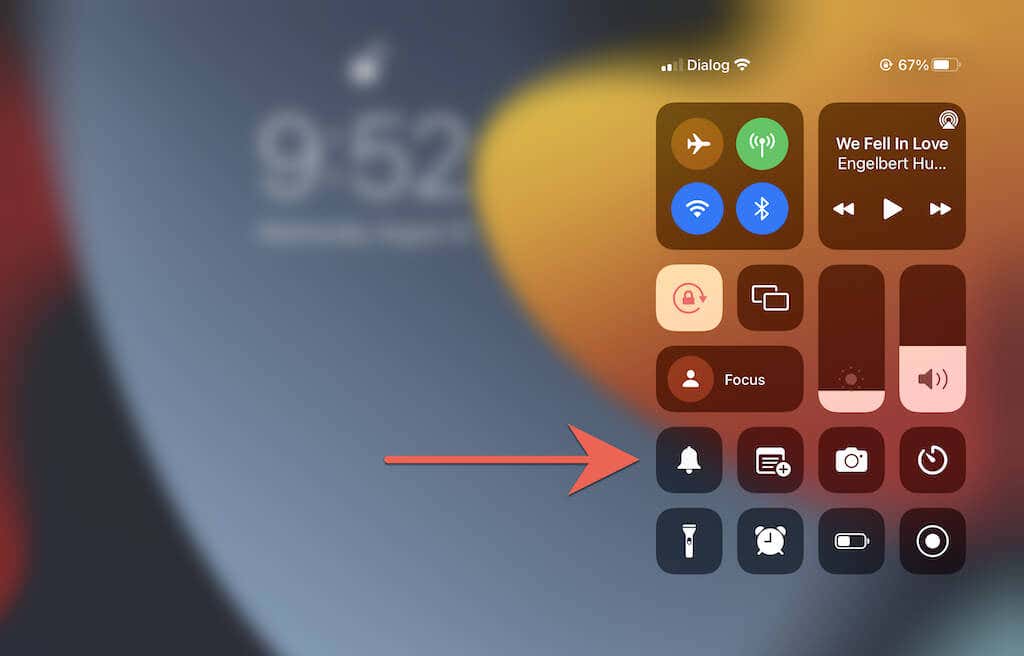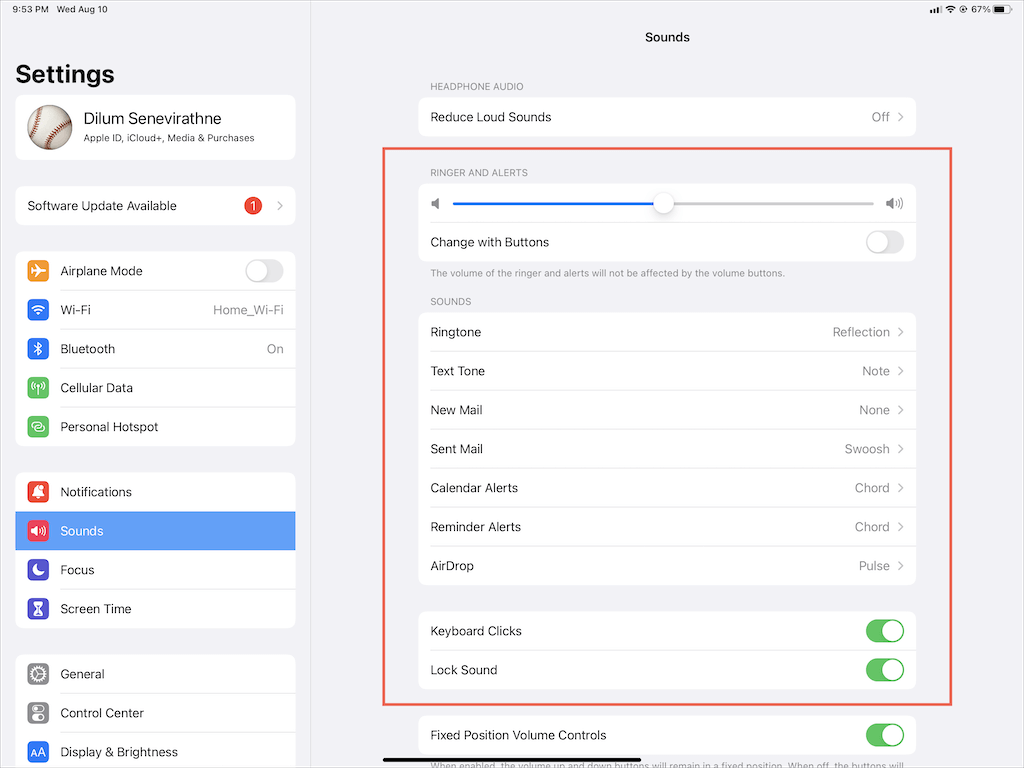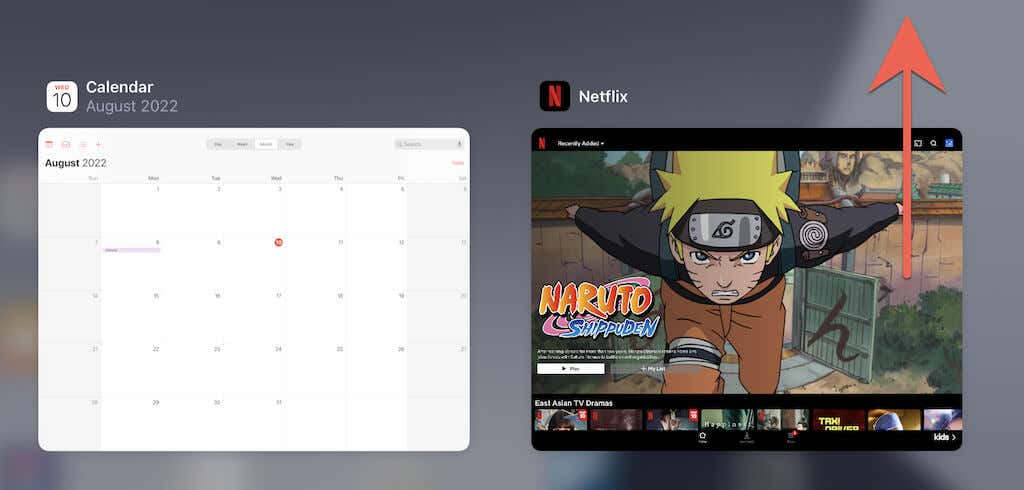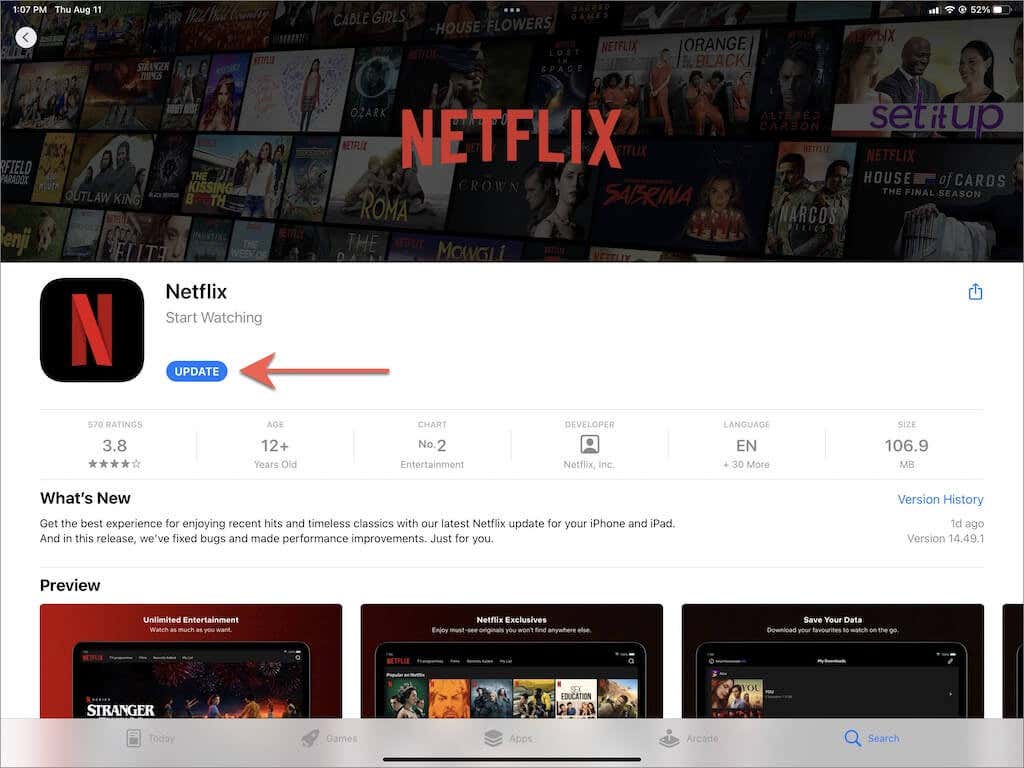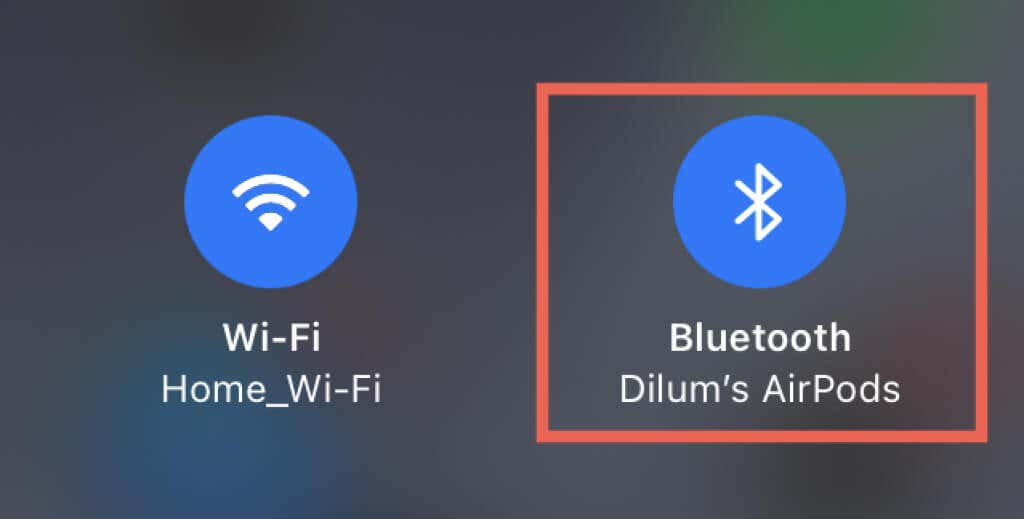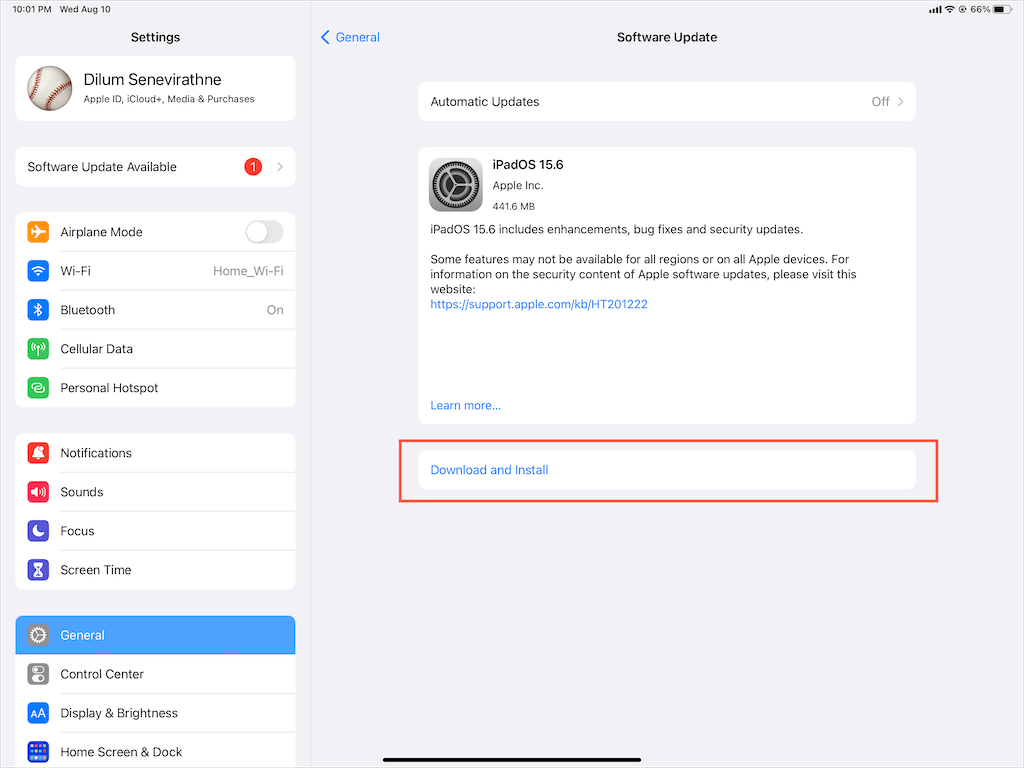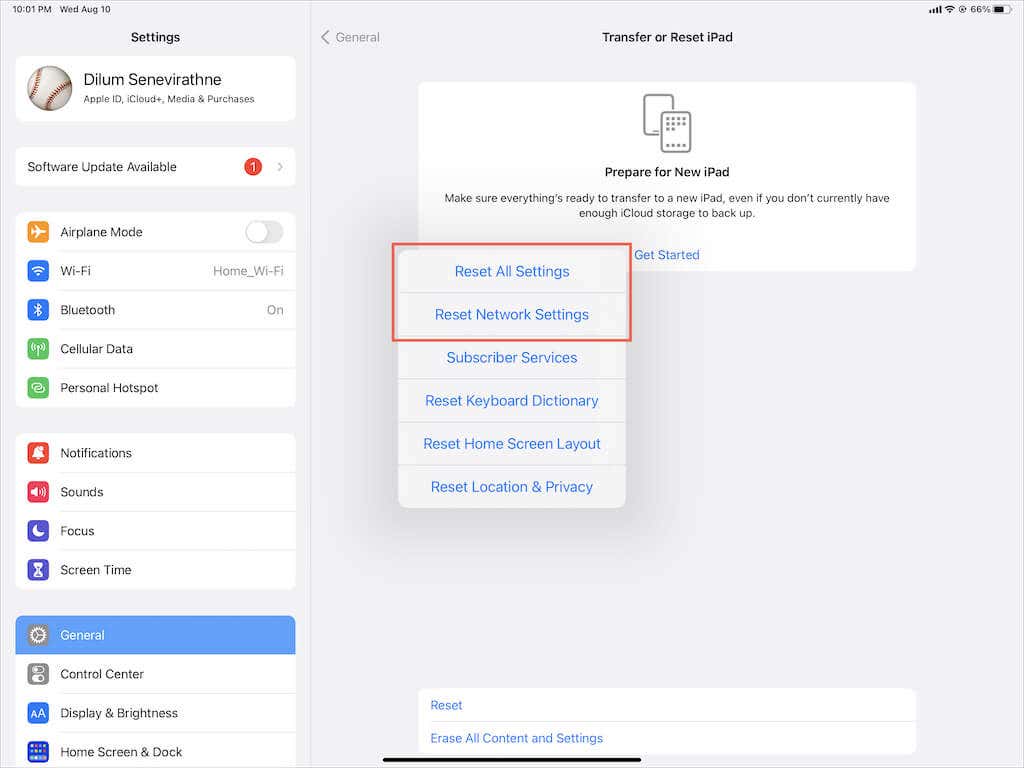If you’re experiencing intermittent or recurrent sound problems on your iPad, there are a few fixes you can try to patch things up. We’ll walk you through each of them.
IPad speaker issues are commonly software-related and mainly occur due to incorrectly configured sound settings, glitchy audio controls, and buggy system software.
If there is no sound on your iPad, you will begin by troubleshooting isolated instances of the issue and then move on toward fixes that address system-wide audio problems.
1. Disable Silent Mode on iPad
You likely have Silent Mode active if your iPad fails to produce sounds only for notifications and alerts like incoming iPhone and FaceTime calls.
To disable Silent Mode, swipe down from the top-right corner of the iPad’s screen to open Control Center. Then, tap the Bell icon if it’s active.
Note: Older iPadOS devices—specifically iPad models from 2013 and earlier—have a physical Mute switch next to the Volume buttons like on the iPhone and iPod touch. Use it to disable Silent Mode.
Another feature that can block sounds on your iPad is Do Not Disturb Mode or Focus. Again, bring up the Control Center and disable the Do Not Disturb/Focus icon.
2. Review iPad Sound Settings
iPadOS offers several customizable sound settings for incoming calls and notification alerts. Review them and ensure you have set them up the way you want.
To do that, open the Settings app and tap Sounds. Then, check if the Ringer and Alerts slider is set at an audible level and that categories like Text Tone and AirDrop have alert tones selected instead of None.
Also, turn on the switches next to Keyboard Clicks and Lock Sound if you want audio feedback while typing or locking.
Next, go to Settings > Notifications. Then, tap on any app that fails to generate notification sounds and confirm that the switch next to Sound is not inactive.
3. Force-Quit and Reload App
If the sound issues on your iPad only occur with a specific app, like Music, YouTube, or Netflix, try force-quitting and reloading the app.
To do that, swipe up from the bottom of the iPad screen to open the App Switcher. Then, remove the relevant card, relaunch the app via the Home Screen or App Library, and try playing the video again.
4. Update App With Audio Issues
If audio woes for a specific app persists, consider checking and applying any newer updates for the app. To do that, open the App Store, tap Search, and search for the app—e.g., Netflix. Then, tap the Update button to install any pending updates.
The only way to update native apps like Music and TV is to update iPadOS. More on that further below.
5. Disconnect Bluetooth Devices From iPad
If you use wireless earphones with your iPad, switching them off ensures your iPad is routing audio to its built-in speakers. For example, if you own AirPods, put them inside their charging case to disable them.
Alternatively, disable your iPad’s Bluetooth module. To do that, open the Control Panel and tap the Bluetooth icon.
Note: iPadOS may automatically connect to AirPods and Beats headsets when you play music or videos on your iPad. If you want to stop that, go to Settings > Bluetooth and tap the Info icon next to your wireless headset. Then, set the Connect to This iPad option to When Last Connected to This iPad.
6. Get Out of Headphone Mode
If you occasionally use Apple’s EarPods or other third-party wired headphones with your iPad, there’s an issue where the tablet can get stuck in Headphone Mode despite unplugging them. Consequently, that disables audio to the built-in speakers.
To confirm, look for a Headphone symbol on the Volume indicator while pressing the Volume Up or Down buttons. If your iPad appears stuck in Headphone Mode, here’s what you must do to fix that:
- Briefly plug in the headset to your iPad again and remove it.
- Clean the headphone jack or charging port on the iPad. The best way to do that is to apply several short blasts of compressed air. To avoid damage to the internal components, keep the can’s nozzle a safe distance away.
- Restart or force-restart your iPad (more on that further below).
7. Toggle Mono Audio On/Off
Mono Audio is a feature that combines the left and right audio channels to make the same sound appear from all speakers on your iPad. Turning it on and off helps reboot the audio system and resolves minor software-related sound issues.
Open the Settings app and tap Accessibility > Audio & Visual. Then, turn the Mono Audio toggle on, then off.
8. Restart iPad to Fix No Sound
Restarting your iPad is a quick and effective way to resolve loads of system-related issues that crop up in iOS and iPadOS. So do that if you haven’t already.
To restart any iPad, iPad Air, iPad Pro, or iPad mini, just open the Settings app, go to General > Shutdown, and drag the Power icon to the right to turn off the device. After the screen goes fully dark, hold down the Side/Top button to turn it back on.
9. Force-Restart Your iPad
If restarting your iPad doesn’t help and you keep dealing with a frustrating issue such as an iPad stuck in Headphone Mode, consider force-restarting it. That translates to cutting off the power to your iPad’s internal components and resolving additional issues that plague the system software.
If your iPad features a Home button, press and hold the Home and Power buttons together until your iPad reboots. If not, quickly press and release the Volume Up button and then the Volume Down button; immediately follow by holding down the Side button until you see the Apple logo.
10. Update iPadOS
Your iPad’s speakers can stop working due to persistent bugs and glitches in the system software. Usually, Apple fixes them in newer system software releases, so we strongly recommend that you update iPadOS to its latest version.
Go to Settings > General > Software Update and tap Download & Install to update your iPad. If you use a beta version of iPadOS, consider downgrading your iPad to the stable channel instead.
11. Reset Your iPhone Settings
If your iPad’s sound problems persist, consider factory resetting your iPadOS settings to resolve conflicting configurations and other underlying issues that could be the source of the issue. You will not lose any data except for saved Wi-Fi networks and passwords.
To do that, open the Settings app, go to General > Transfer or Reset iPad > Reset, and tap Reset Network Settings. If that does not help, use the Reset All Settings option to revert all settings on your iPad to their defaults.
What Else Is on the Cards?
You can resolve sound issues on the iPad with a fair amount of troubleshooting. But if the problem persists, it might be due to a speaker defect, so your next option is to contact Apple Support or book a Genius Bar appointment.
In the meantime, you can always back up your data to iCloud or a Mac/iTunes and factory reset your iPad in DFU Mode in a last-ditch effort to resolve the issue yourself.
[related_posts_by_tax posts_per_page="5"]